A complete guide to Warrnambool, VIC

Located at the western end of the famed Great Ocean Road, Warrnambool is a charming coastal city perched on Lady Bay between the Merri and Hopkins rivers.
It’s known for safe, sheltered beaches, a moderate climate, parks and gardens, and Logans Beach, where southern right whales arrive between June and September each year to calve.
Surf, rock, sea and river fishing are popular, particularly at Levys and Killarney beaches and on the Hopkins and Merri rivers.
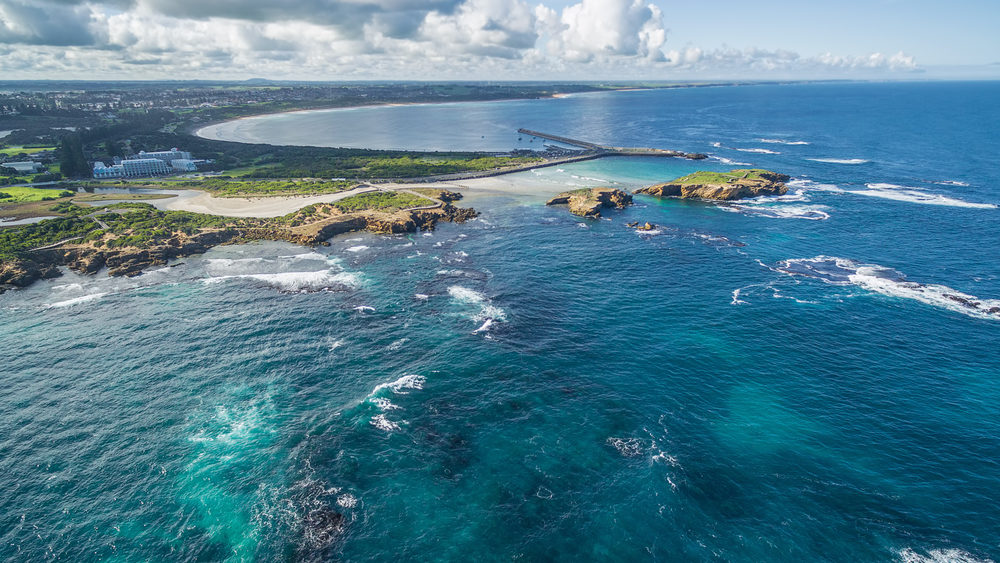
The Flagstaff Hill Maritime Museum and Village, which has more than 40 historic buildings, is an outstanding opportunity to experience life in a 19th-century Victorian coastal village. It offers a unique insight into the state’s infamous Shipwreck Coast, with artefacts from more than 200 ships wrecked along the coastline that extends from here.
While the city remains a signifficant manufacturing centre, in recent times it has become a popular seaside holiday resort town attracting whale watchers in the winter months and surfers and anglers in the summer months.
It has a vibrant laneway food and drink culture and an ever-growing display of street art.
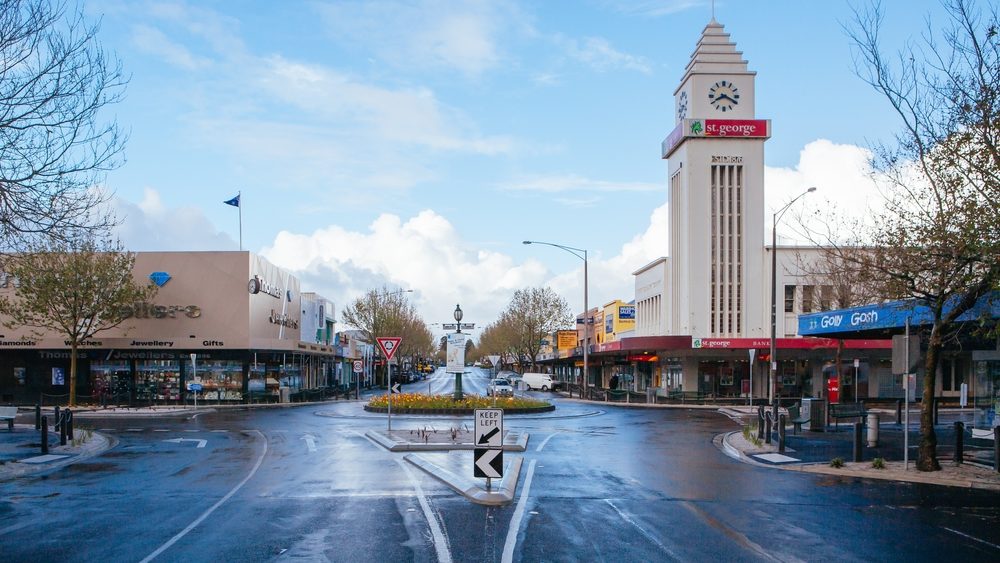
Warrnambool’s industrial base includes milk-processing and dairy production.
The famous Fletcher Jones company began when David Fletcher Jones purchased a clothing store in the city in 1924. The company’s factory opened in 1948 and closed in 2005.
Warrnambool boasts a large number of interesting historic buildings.
With its relatively modest population of about 35,000, it is, quite fairly, described as a happy cross between a large country town and a small city.
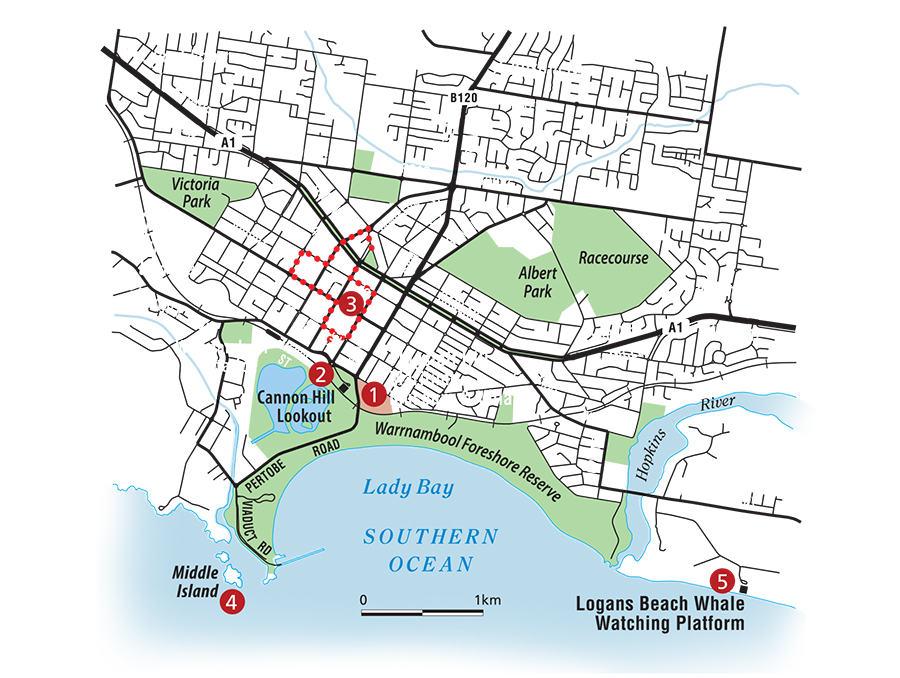
Location:
Warrnambool is 256km west of Melbourne via the Hamilton Highway, through Geelong and Camperdown. It lies at the western end of the Great Ocean Road.
Origin of name:
Warrnambool comes from the language of the Dhauwurd Wurrung people. It was the name they gave to a now-extinct volcano 24km north-east of the city.
Useful websites:
visitvictoria.com/regions/great-ocean-road/destinations/warrnambool
Places of interest
1. Flagstaff Hill Maritime Museum and Village
This popular attraction is a re-creation of a late 19th-century coastal port, complete with cobblestone streets.
Each building represents an important aspect of port life during the Victorian era.
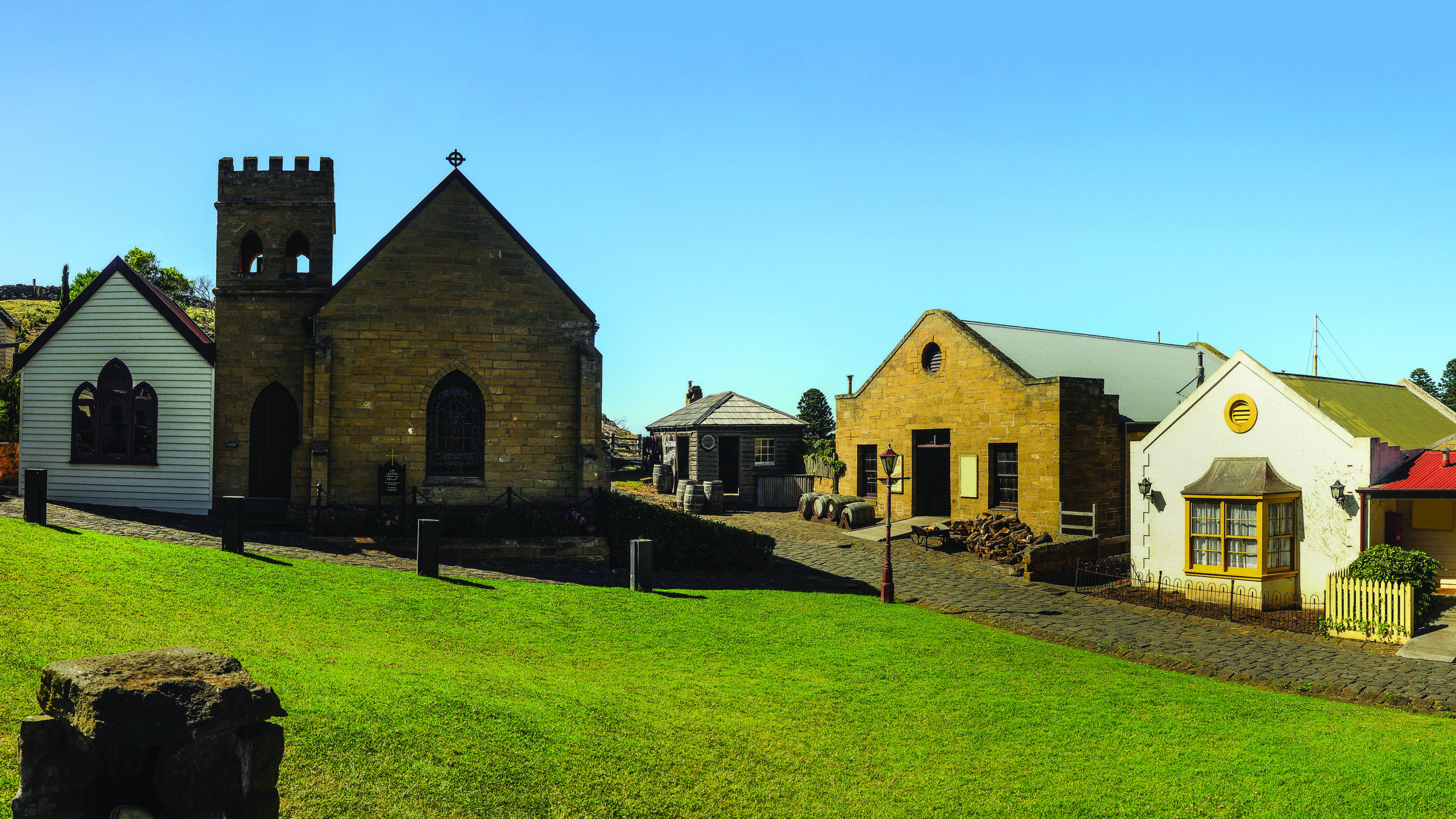
The hill was named in 1854 when a flagstaff was placed there as a navigational aid after an international flag-signalling code was devised. Fortifications were completed in 1887 to defend against a possible Russian attack after Anglo-Russian tensions rose due to rivalry over Afghanistan.
The more than 40 buildings, all re-created using authentic materials, include: St Nicholas Seamen’s Church, the Steampacket Inn, Bank of Australasia, a brass foundry, newspaper office, ship chandler’s office, slipway, steam-powered workshop, shipping agent, Masonic lodge, jail, sailmaker’s loft, cooper’s workshop, armoury, officers’ huts, port medical officer’s surgery and more.
2. Cannon Hill Lookout
Lying up along Artillery Crescent is Cannon Hill Lookout, which offers panoramic views across Lady Bay and Lake Pertobe.
It’s named for a World War I howitzer and two World War II anti-aircraft guns. A marker commemorates what’s likely to have been early Portuguese exploration.
On the hill leading up to the lookout there is a war memorial officially opened in 1926 and, more recently (in 2010), an Aboriginal Soldiers Memorial.
3. Warrnambool Heritage Trail
This easy 3km walk around the centre of Warrnambool passes 22 places of heritage and historic interest.
A brochure is available at the Visitor Information Centre.
4. Middle Island and the maremma sheepdogs
Middle Island, a short distance offshore in Stingray Bay, is home to a colony of little penguins that was reduced by feral predators from 800 in 1999 to fewer than 10 in 2005.
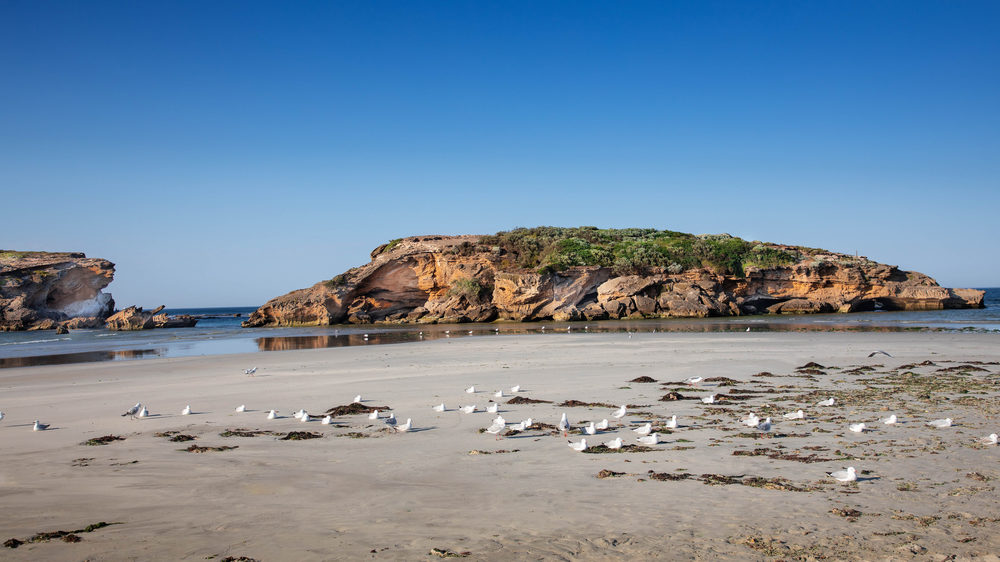
Maremmas, Italian sheepdogs bred as guardians, were brought in for protection and by 2016 there were an estimated 180 penguins. Middle Island has been closed to the public since 2006 to safeguard penguin burrows.
The Maremmas now spend time there during the penguin breeding season. At other times they are homed at Flagstaff Hill Maritime Village.
5. Logan Beach Whale Watching Platform
Southern right whales migrate from cooler Antarctic waters to Lady Bay to give birth between June and September.
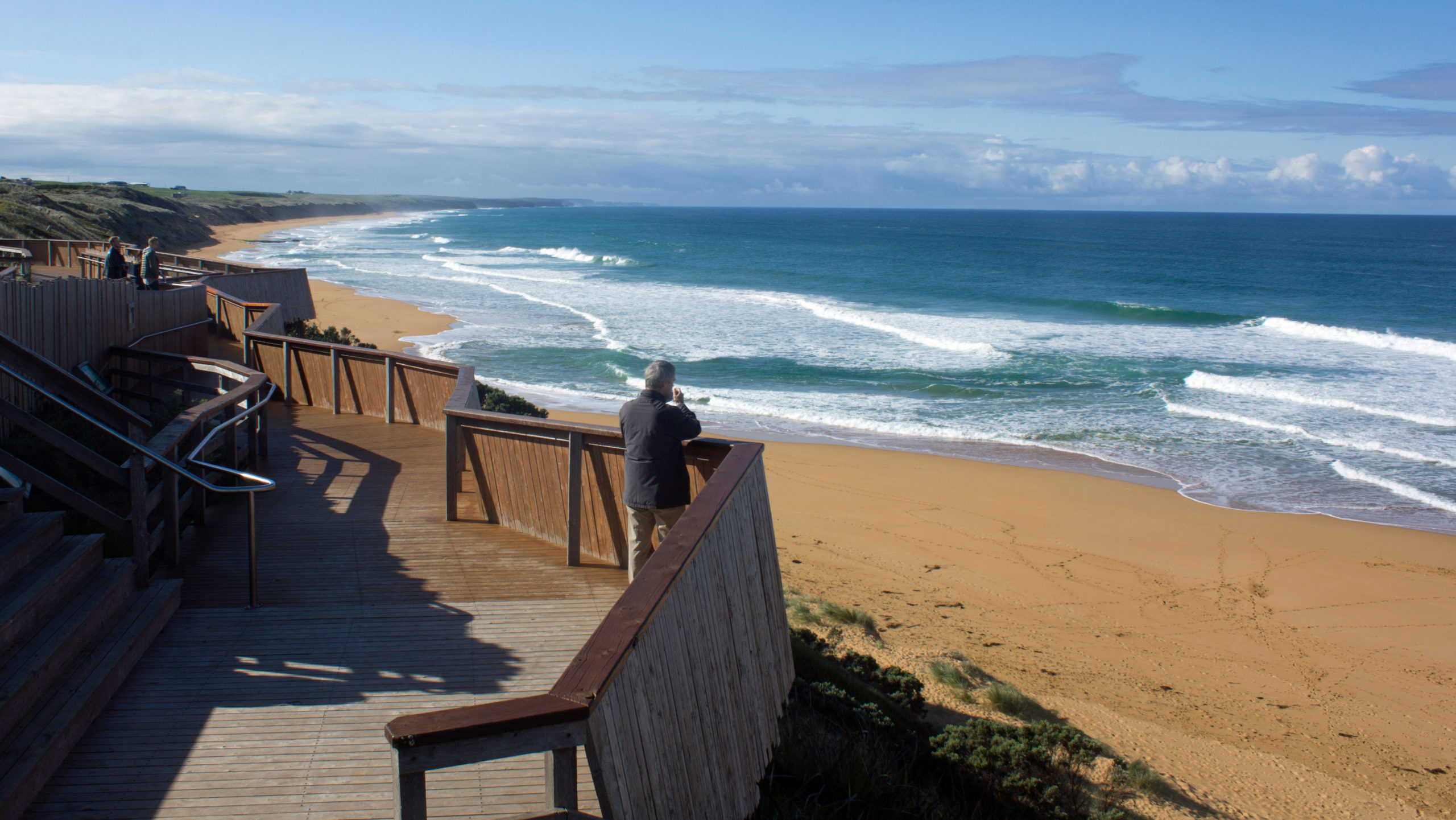
The Logan Beach Whale Watching Platform, east of Hopkins River, is an ideal viewing point.
Behaviours that can be seen from here include tail slapping, spy hopping and fluke waving. Notifications of whale sightings are recorded at the Visitor Information Centre.
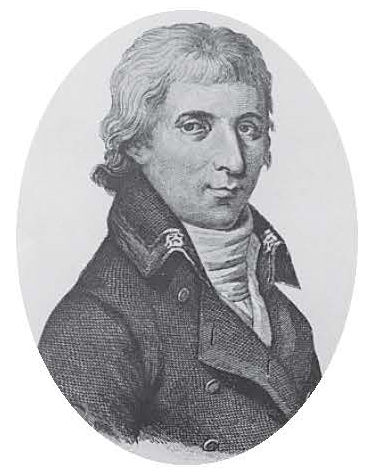
History
The Dhauwurd Wurrung were the area’s original inhabitants.
The first European at Lady Bay was French explorer Nicolas Baudin (right) in 1802.
Whalers and sealers used the bay in the 1830s.
Lady Bay was surveyed and named by whalers in 1844.
European settlement began with graziers in the early 1840s.
A survey of the townsite was carried out in 1846.
In 1847 the first land sales happened in Melbourne; it officially became a municipality in 1855 and a town in 1883.
By 1850 the town had a school, community chapel, two hotels and a blacksmith.
The first jetty was built in 1850 and Warrnambool emerged as a significant port for local wool, wheat, potatoes, onions and dairy produce.
The design for the Warrnambool Botanic Gardens was completed in 1879.
Gun emplacements were installed in the 1880s due to fears of a Russian invasion.
The railway station was built in 1890 when the railway reached the town from Terang.
The City of Warrnambool was officially recognised in 1918.
The Fletcher Jones factory opened in 1948 to supply the retail business, which began in 1924.
In 1975 Flagstaff Hill Maritime Museum opened.
The Fletcher Jones factory closed in 2005.





